Historic Socio-Hydromorphology Co-Evolution in the Delta of Neretva
Abstract
:1. Introduction
2. Materials and Methods
2.1. Study Area
2.2. Methodology
- Historical climate, sea-level rise, and hydromorphological documentation to understand the coupled processes related to climate and MSL change over time and between the climate and hydromorphology of the river system and delta from its distant past.
- Historical hydromorphological and social coupled evidence to understand their historic interactions, impacts, and mutual consequences.
- Historical socio-hydromorphology and contemporary setting to understand the hypothesis about the nature of observed social and hydromorphological processes—that is, two-way feedback, which contributes to the dynamics of the coupled human–water resource management system, security of WEF resources, and sustainability.
3. Case Study Results
3.1. Historical Climate, Sea-Level Change, and Hydromorphology
3.1.1. Climate
3.1.2. Mean Sea-Level Change
3.1.3. Hydromorphology
3.2. Historical Socio-Hydromorphology Assessment
4. Discussion
- (i).
- A long-range sustainable policy maximizing the natural order and equilibrium state of the system. This implies a system open to natural transgression processes that lead to sustainable hydromorphological systems and ecosystems without man-made adaptation and resilience measures. This is a natural energy-based evolution and adaptation with low entropy generation. The hydromorphology and biophysical environment will be similar to those of the Roman period. Such systems will support a natural and sustainable economy.
- (ii).
- A limited-range sustainable policy that will reduce disorder while respecting the established regulatory framework and EU policy toward the Sustainable Development Goals [42]. This implies the application of adaptation measures and strengthening of resistance through a combination of gray and green solutions (technology) to reduce transgression impacts on society and the economy, man-made evolution, and adaptation with technology for high entropy generation. Future hydromorphology and biophysical environments will be a continuation of current transgression processes with an accelerated growth of imbalance. This is a modern-day policy supported by the EU’s circular economy and green policy.
5. Conclusions
Funding
Institutional Review Board Statement
Informed Consent Statement
Data Availability Statement
Conflicts of Interest
References
- Sivapalan, M.; Savenije, H.H.G.; Blöschl, G. Socio-Hydrology: A new science of people and water. Hydrol. Process 2012, 26, 1270–1276. [Google Scholar] [CrossRef]
- Montanari, A.; Young, G.; Savenije, H.H.; Hughes, D.; Wagener, T.; Ren, L.L.; Koutsoyiannis, D.; Cudennec, C.; Toth, E.; Grimaldi, S.; et al. “Panta Rhei—Everything Flows”: Change in hydrology and society—The IAHS Scientific Decade 2013–2022. Hydrolog. Sci. J. 2013, 58, 1256–1275. [Google Scholar] [CrossRef]
- Margeta, J.; Iacovides, I.; Azzopardi, E. Integrated Approach to Development, Management and Use of Water Resources; UNEP/MAP, Priority Actions Programme: Split, Croatia, 1997; p. 154. ISBN 953-6429-11-X. [Google Scholar]
- Vranješ, M.; Prskalo, M.; Džeba, T. Hydrology and hydrogeology of the Neretva and Trebišnjica basins. e-ZBORNIK, June 2013; pp. 1–23, No. 5. (In Croatian) [Google Scholar]
- Newson, M.D. Sustainable integrated development and the basin sediment system: Guidance from fluvial geomorphology. In Integrated River Basin Development; Kirby, C., White, W.R., Eds.; Wiley: Chichester, UK, 1994; pp. 1–10. [Google Scholar]
- Blair, P.; Buytaert, W. Socio-hydrological modelling: A review asking “why, what and how?”. Hydrol. Earth Syst. Sci. 2016, 20, 443–478. [Google Scholar] [CrossRef]
- Liu, Y.; Tian, F.; Hu, H.; Sivapalan, M. Socio-hydrologic perspectives of the co-evolution of humans and water in the Tarim River basin, Western China: The Taiji–Tire model. Hydrol. Earth Syst. Sci. 2013, 18, 1289–1303. [Google Scholar] [CrossRef]
- Troy, T.; Pavao-Zuckerman, M.; Evans, T.P. Debates—Perspectives on Socio-Hydrology: Socio-Hydrologic Modeling: Tradeoffs, Hypothesis Testing, and Validation. Water Resour. Res. 2015, 51, 4806–4814. [Google Scholar] [CrossRef]
- Zhao, X.; Liu, D.; Wei, X.; Ma, L.; Lin, M.; Meng, X.; Huang, Q. Analysis of Socio-Hydrological Evolution Processes Based on a Modeling Approach in the Upper Reaches of the Han River in China. Water 2021, 13, 2458. [Google Scholar] [CrossRef]
- Liu, D.; Tian, F.; Lin, M.; Sivapalan, M. A conceptual socio-hydrological model of the co-evolution of humans and water: Case study of the Tarim River basin, western China. Hydrol. Earth Syst. Sci. 2015, 19, 1035–1054. [Google Scholar] [CrossRef]
- Tejedor, A.; Longjas, A.; Caldwell, R.; Edmonds, D.A.; Zaliapin, I.; Foufoula-Georgiou, E. Quantifying the signature of sediment composition on the topologic and dynamic complexity of river delta channel networks and inferences toward delta classification. Geophys. Res. Lett. 2016, 43, 3280–3287. [Google Scholar] [CrossRef]
- Margeta, J. An Engineering Approach to Assessing the Vulnerability of Water Abstraction. Appl. Sci. 2024, 14, 1879. [Google Scholar] [CrossRef]
- Ma, W.; Kang, Y.; Song, S. Analysis of Streamflow Complexity Based on Entropies in the Weihe River Basin, China. Entropy 2020, 22, 38. [Google Scholar] [CrossRef]
- Kumar, P.; Ruddell, B.L. Information driven ecohydrologic self-organization. Entropy 2010, 12, 2085–2096. [Google Scholar] [CrossRef]
- Margeta, J. The Neretva River: Integrated coastal area and river basin management. In Transboundary Water Resources in the Balkan; Ganoulis, J., Murphy, I.L., Brilly, M., Eds.; Kluwer Academic Press: Dordrecht, The Netherlands, 2000; pp. 55–65. [Google Scholar]
- Jurić, I. Economic Development of the Harbor and the Metković Market 1850–1918; Matica hrvatska Ploče: Ploče, Croatia, 2000; pp. 1–140. (In Croatian) [Google Scholar]
- Rinaldo, A.; Rodriguez-Iturbe, R.I.; Rigon, E.; Ijjasz-Vasquez, R.L. Self-organized fractal river networks. Phys. Rev. Lett. 1993, 70, 822–825. [Google Scholar] [CrossRef] [PubMed]
- Paola, C.; Robert, R.; Twilley, D.A.; Edmonds, W.K.; Mohrig, D.; Parker, G.; Viparelli, E.; Voller, V.R. Natural Processes in Delta Restoration: Application to the Mississippi Delta. Annu. Rev. Mar. Sci. 2011, 3, 67–91. [Google Scholar] [CrossRef] [PubMed]
- McCormick, M.; Büntgen, U.; Cane, M.A.; Cook, E.R.; Harper, K.; Huybers, P.; Litt, T.; Manning, S.W.; Mayewski, P.A.; Alexander, F.M.; et al. More Climate Change during and after the Roman Empire: Reconstructing the Past from Scientific and Historical Evidence. J. Interdiscip. Hist. 2012, 43, 169–220. [Google Scholar] [CrossRef]
- Büntgen, U.; Tegel, W.; Nicolussi, K.; Mccormick, M.; Frank, D.; Trouet, V.; Kaplan, J.O.; Herzig, F.; Heussner, K.-U.; Wanner, H. 2500 Years of European Climate Variability and Human Susceptibility. Science 2011, 331, 578–582. [Google Scholar] [CrossRef] [PubMed]
- May, A. Climate and Civilization for the Past 4000 Years. Installed 22.6. 2016. Available online: https://andymaypetrophysicist.com/climate-and-civilization-for-the-past-4000-years/ (accessed on 10 October 2023).
- Malović, T.; Velić, J.; Cvitković, M.; Vekić, M.; Šapina, M. Definition of new Pliocene, Pleistocene and Holocene lithographic units in the Croatia part of the Adriatic Sea (Shallow offshore). Geoadria 2015, 20, 85–108. [Google Scholar]
- Kačar, S. The Neolithisation of the Adriatic: Contrasting Regional Patterns and Interactions along and across the Shores. Open Archaeol. 2021, 7, 798–814. [Google Scholar] [CrossRef]
- Šegota, T. Sea level and vertical movement of the bottom of the Adriatic Sea from the Ris-Virmian interglacial to the present day. Geol. Vjesn. 1982, 35, 93–109. (In Croatian) [Google Scholar]
- Morhange, C.; Marriner, N.; Excoffon, P.; Bonnet, S.; Flaux, C.; Zibrowius, H.; Goiran, J.-P.; El Amouri, M. Relative Sea-Level Changes during Roman Times in the Northwest Mediterranean: The 1st Century A.D. Fish Tank of Forum Julii, Fréjus, France. Geoarchaeol. Int. J. 2013, 28, 363–372. [Google Scholar] [CrossRef]
- Cazenave, A. Climate change and sea-level rise. World Sci. Encycl. Clim. Chang. 2021, 3, 113–122. [Google Scholar]
- Chembolua, V.; Duttab, S. Entropy and Energy Dissipation of a Braided River System. Procedia Eng. 2016, 144, 1175–1179. [Google Scholar] [CrossRef]
- Balić, D.; Malvić, T. Pliocene–Quaternary stratigraphy and sedimentation at the Neretva River Mouth, on the Croatian Adriatic Coast. Geol. Q. 2013, 57, 233–242. [Google Scholar] [CrossRef]
- Peutinger’s Tabula. Available online: https://en.wikipedia.org/wiki/Tabula_Peutingeriana#/media/File:TabulaPeutingeriana.jpg (accessed on 9 July 2024).
- Farčić, J.; Glamuzina, M. Donjoneretva region on Coronelli’s maps “Atlante della Republica di Venezia”. Acta Geographica Croatica 1999, 34, 89–125. [Google Scholar]
- Maps of Europe. Available online: http://geoportost.ios-regensburg.de/map/BV043564212 (accessed on 5 October 2023).
- Cartographic Collection HR-DAZD-383, topographic map of of Austro-Hungarian Empire, 1880–1889, No. 53, sheet 26, State Archives in Zadar, Croatia.
- Angelakis, A.N.; Margeta, J.; Salgot, M.; Zheng, X.Y. Evolution of Hydro-Technologies and Relevant Associations Focusing on Hellenic World. Water 2023, 15, 1721. [Google Scholar] [CrossRef]
- Smoljan, I. Neretva; Independent Author’s Edition; Zrinski: Čakovec, Croatia, 1970. (In Croatian) [Google Scholar]
- Patch, C. History and Topography of Narona; Matica Hrvatska Metković: Metković, Croatia, 1996. (In Croatian) [Google Scholar]
- Novak, G. History of Dalmatia, Book 1 and 2; Marjan tisak d.o.o.: Split, Croatia, 2004; ISBN 953-214-183-9. (In Croatian) [Google Scholar]
- Racetin, I.; Krtalić, A.; Srzić, V.; Zovko, M. Characterization of short-term salinity fluctuations in the Neretva River Delta situated in the southern Adriatic Croatia using Landsat-5 TM. Ecol. Indic. 2019, 10, 1–14. [Google Scholar] [CrossRef]
- IPPC. Climate Change 2022: Impacts, Adaptation and Vulnerability. Contribution of Working Group II to the Sixth Assessment Report of the Intergovernmental Panel on Climate Change; Cambridge University Press: Cambridge, UK, 2022. [Google Scholar] [CrossRef]
- Official Gazette of Croatia. Climate Change Adaptation Strategy in the Republic of Croatia for the Period up to 2040 with a View to 2070; NN 46/2020 NN 46/2020; Official Gazette of Croatia: Zagreb, Croatia, 15 April 2020. (In Croatian) [Google Scholar]
- Nienhuis, J.H.; Kim, W.; Milne, G.A.; Quock, M.; Slangen, A.B.; Törnqvist, T.E. River Deltas and Sea-Level Rise. Annu. Rev. Earth Planet. Sci. 2023, 51, 79–104. [Google Scholar] [CrossRef]
- Official Gazette of Croatia. Water Management Plan of Croatia until 2027; NN 54/2022; Official Gazette of Croatia: Zagreb, Croatia, 2022. [Google Scholar]
- The 2030 Agenda for Sustainable Development’s 17 Sustainable Development Goals (SDGs). Available online: https://sdgs.un.org/sites/default/files/2020-09/SDG%20Resource%20Document_Targets%20Overview.pdf (accessed on 9 July 2024).
- Dale, P.E.R.; Connelly, R. Wetlands and human health: An overview. Wetl. Ecol. Manag. 2012, 20, 165–171. [Google Scholar] [CrossRef]
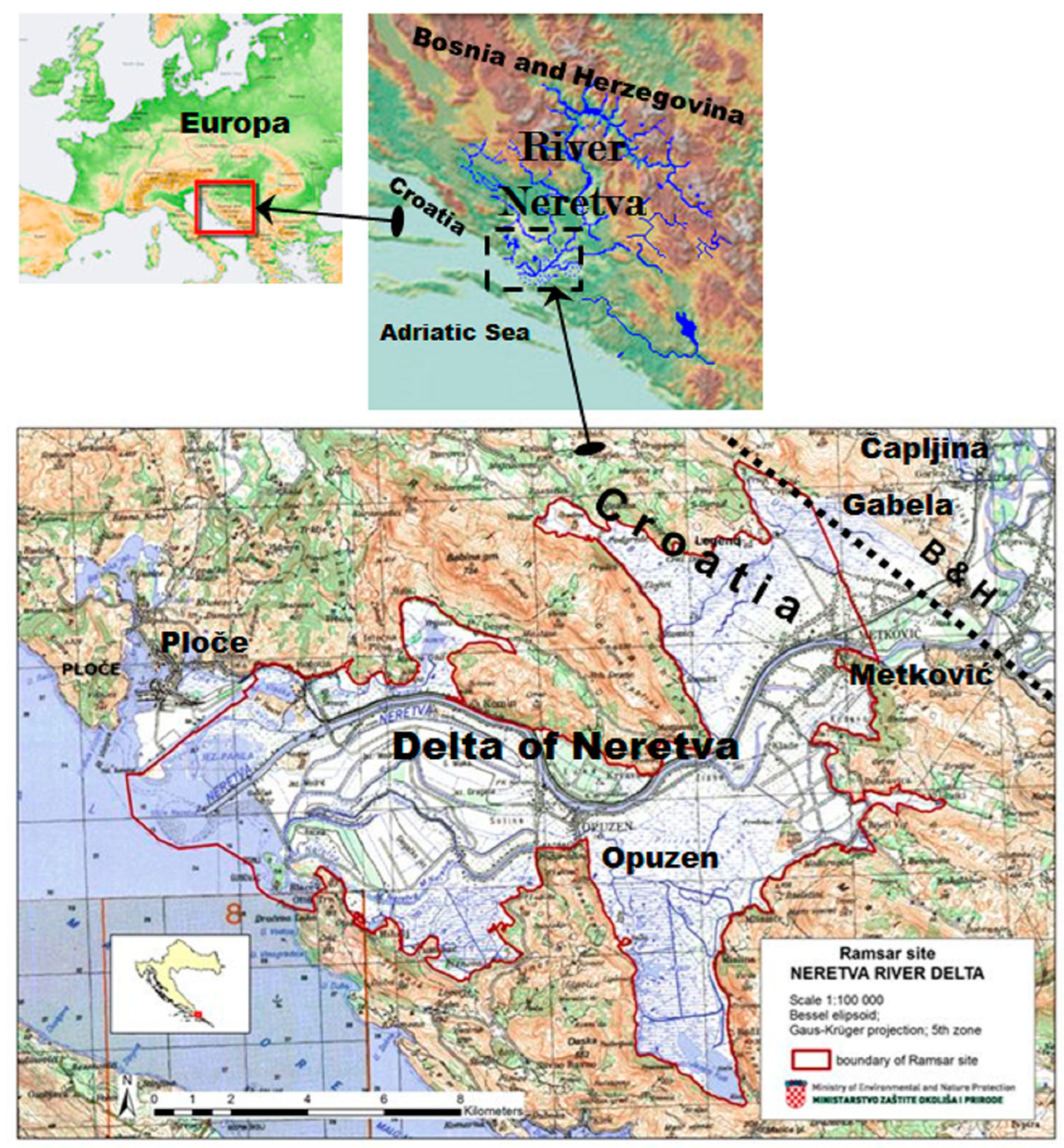
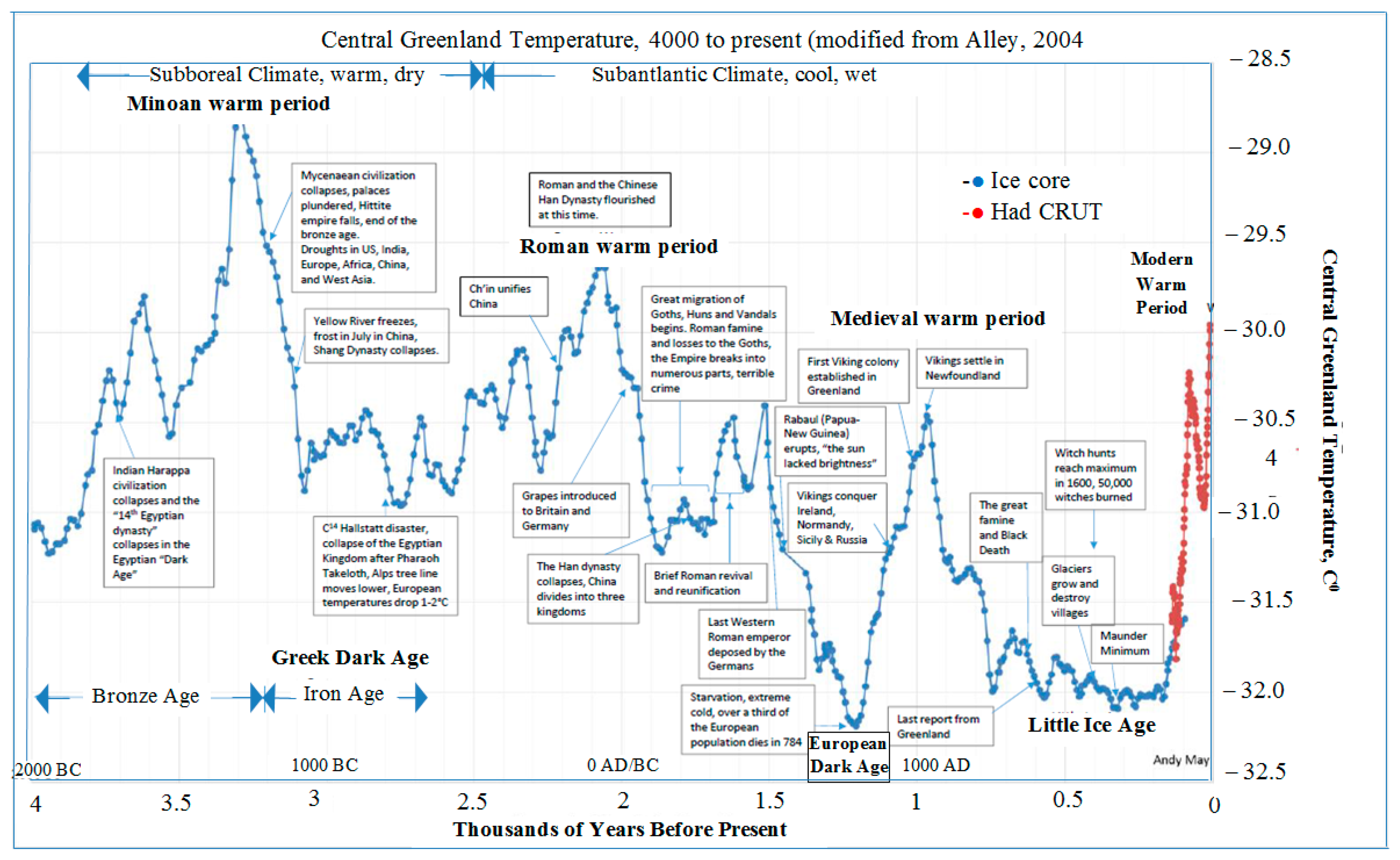
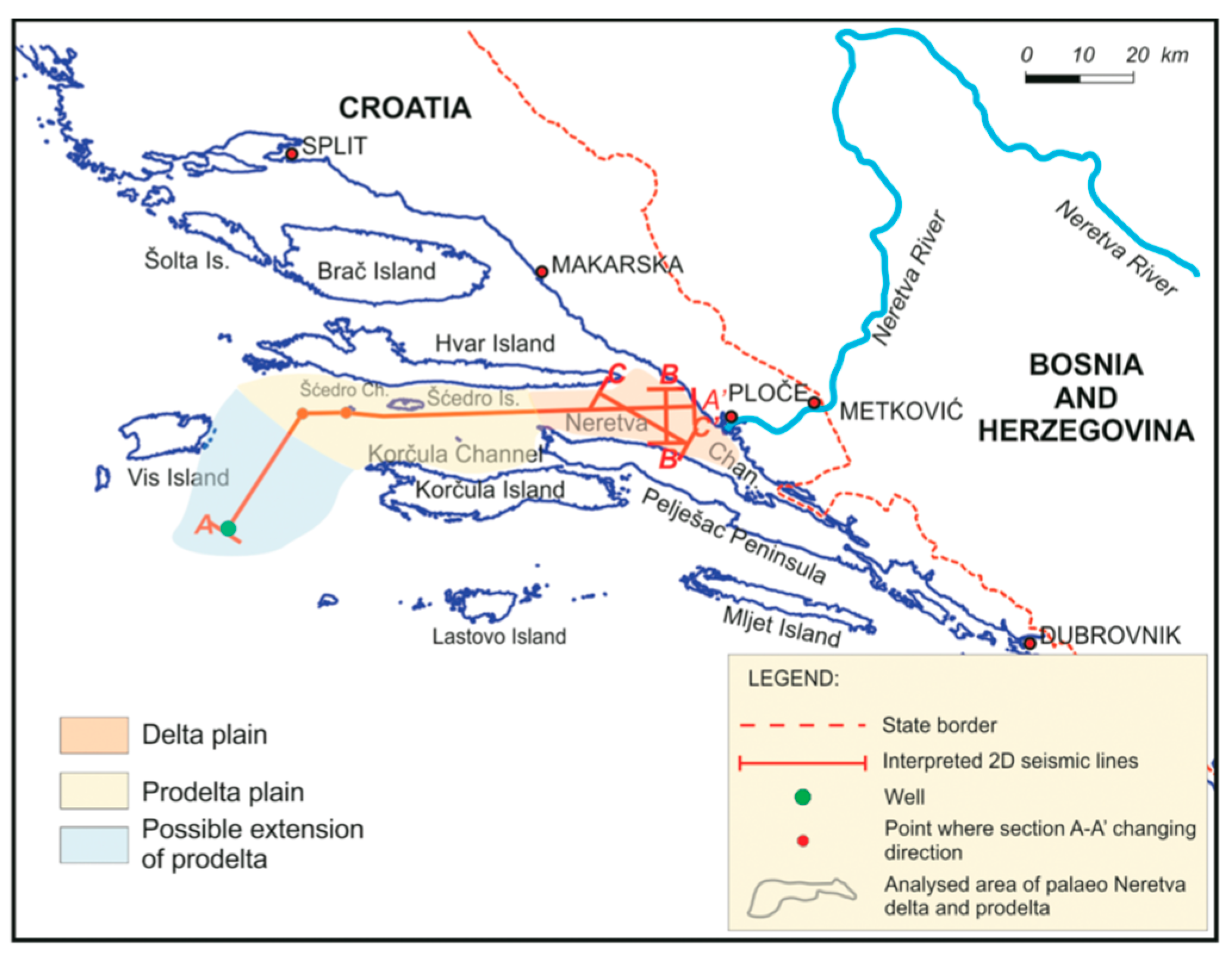
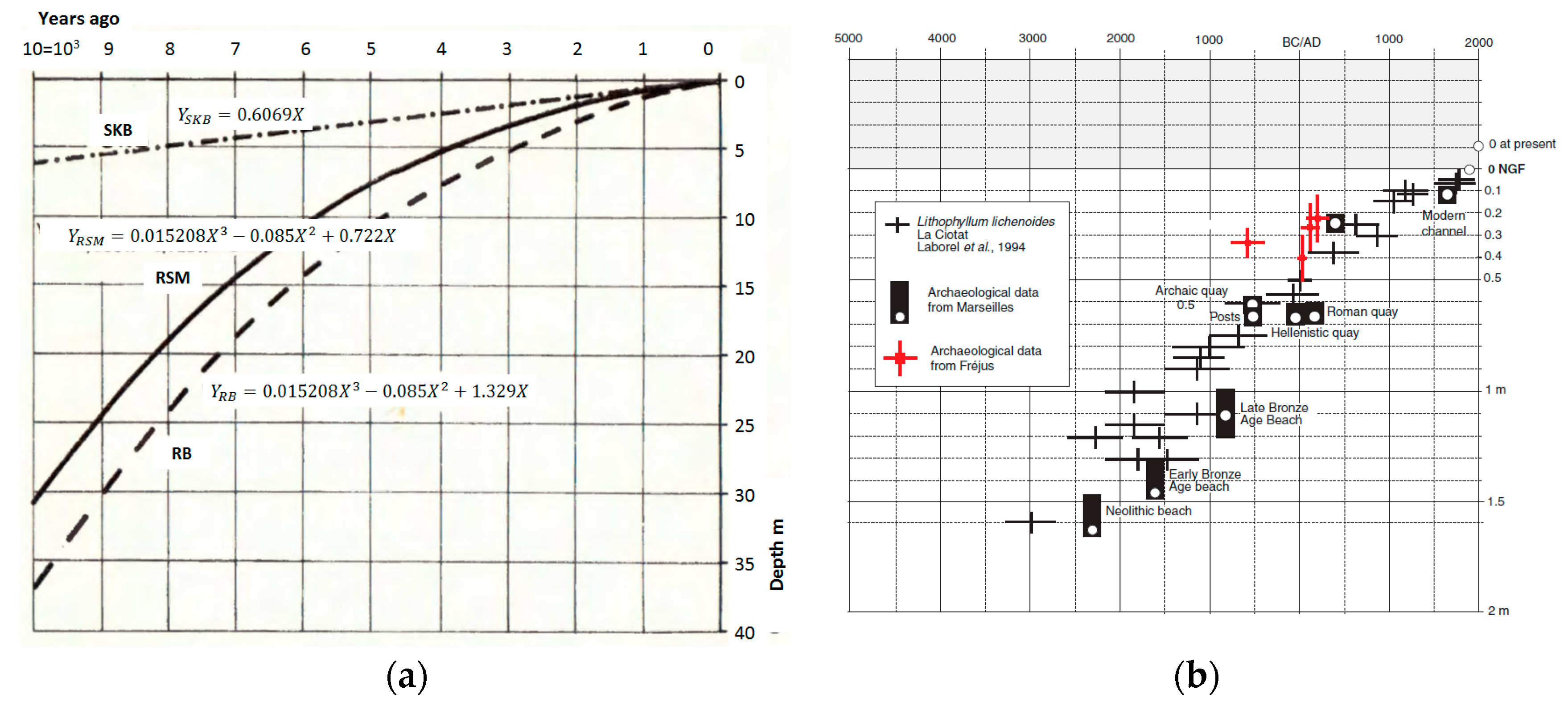
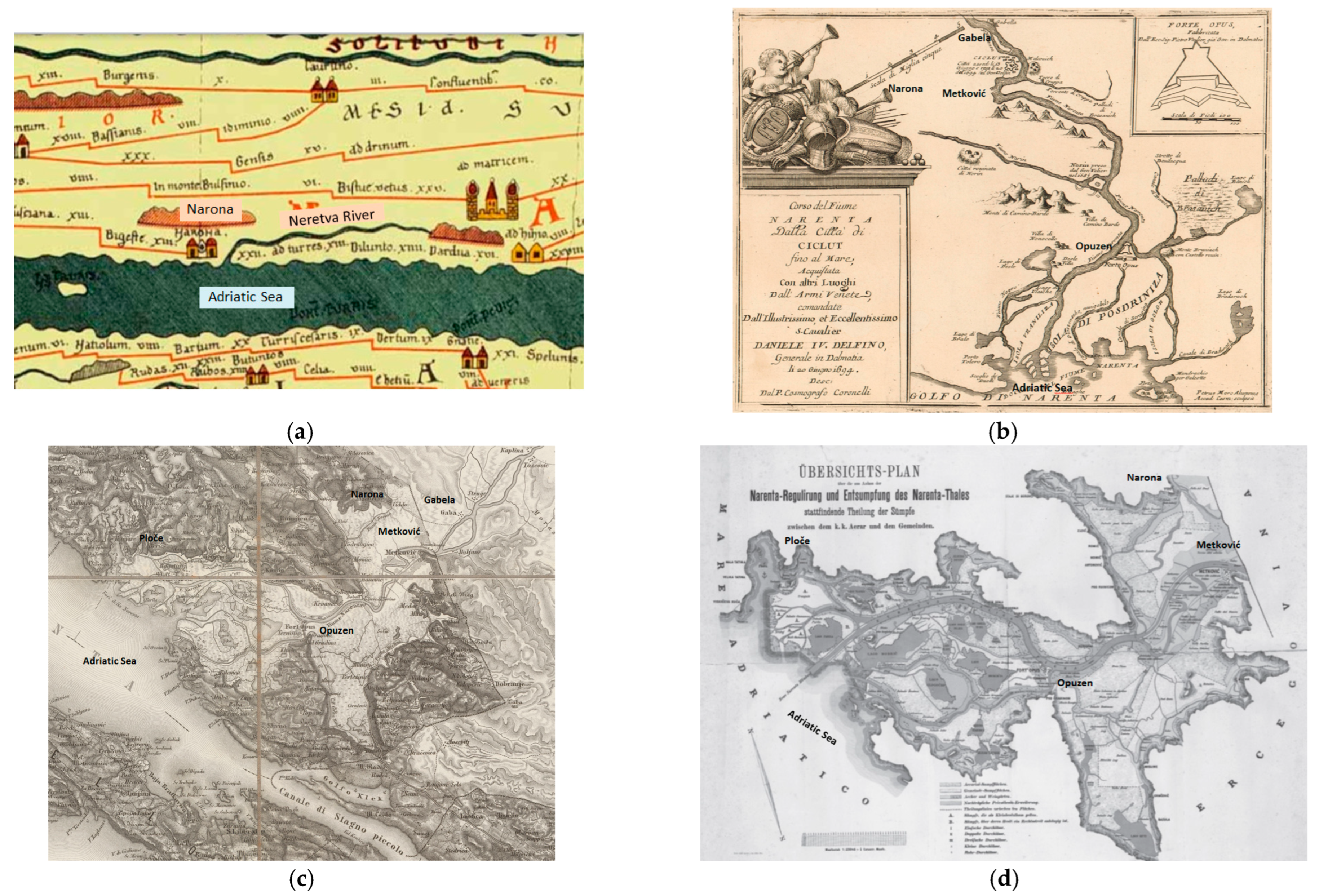
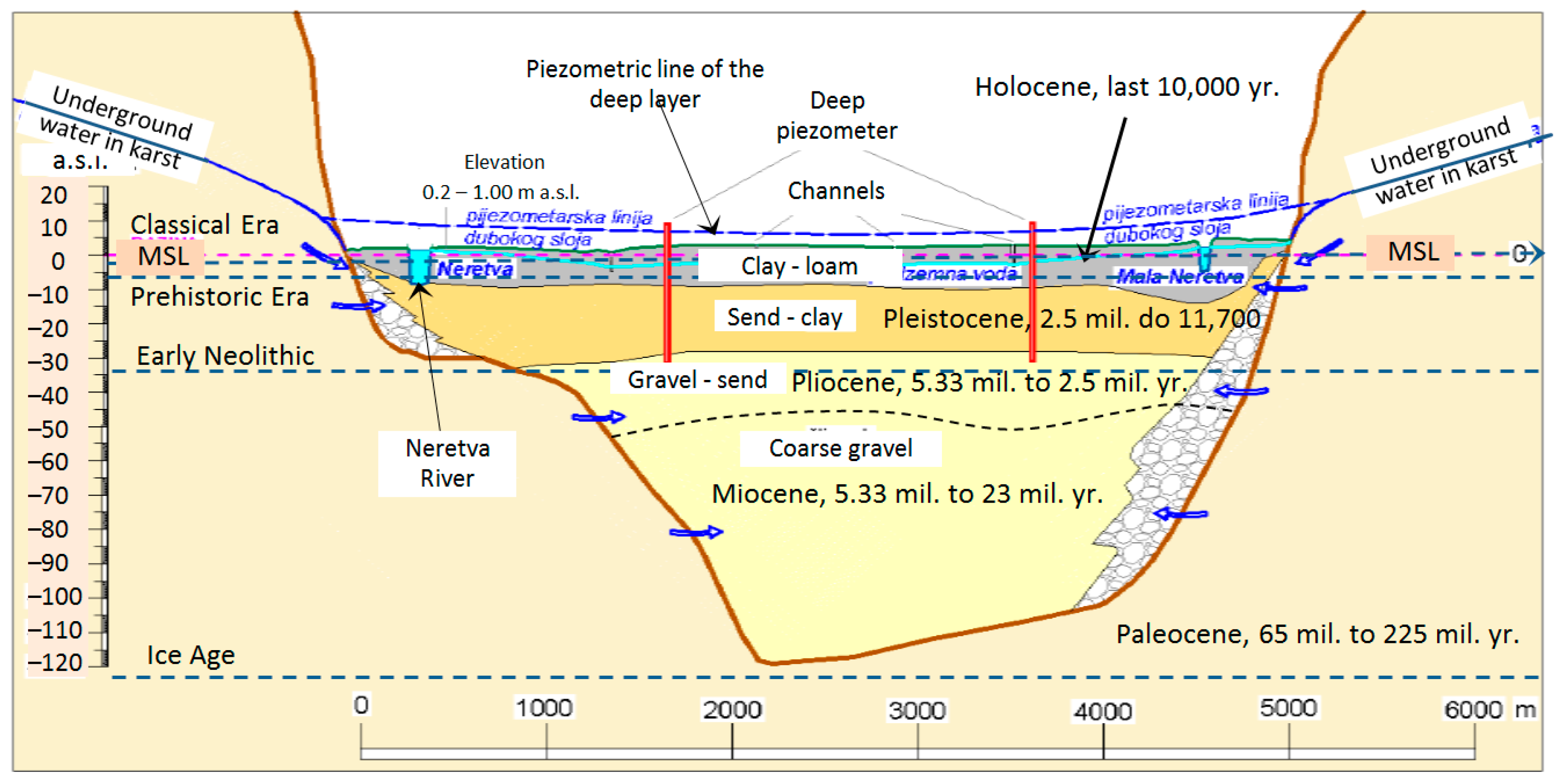
Disclaimer/Publisher’s Note: The statements, opinions and data contained in all publications are solely those of the individual author(s) and contributor(s) and not of MDPI and/or the editor(s). MDPI and/or the editor(s) disclaim responsibility for any injury to people or property resulting from any ideas, methods, instructions or products referred to in the content. |
© 2024 by the author. Licensee MDPI, Basel, Switzerland. This article is an open access article distributed under the terms and conditions of the Creative Commons Attribution (CC BY) license (https://creativecommons.org/licenses/by/4.0/).
Share and Cite
Margeta, J. Historic Socio-Hydromorphology Co-Evolution in the Delta of Neretva. Appl. Sci. 2024, 14, 6477. https://doi.org/10.3390/app14156477
Margeta J. Historic Socio-Hydromorphology Co-Evolution in the Delta of Neretva. Applied Sciences. 2024; 14(15):6477. https://doi.org/10.3390/app14156477
Chicago/Turabian StyleMargeta, Jure. 2024. "Historic Socio-Hydromorphology Co-Evolution in the Delta of Neretva" Applied Sciences 14, no. 15: 6477. https://doi.org/10.3390/app14156477





